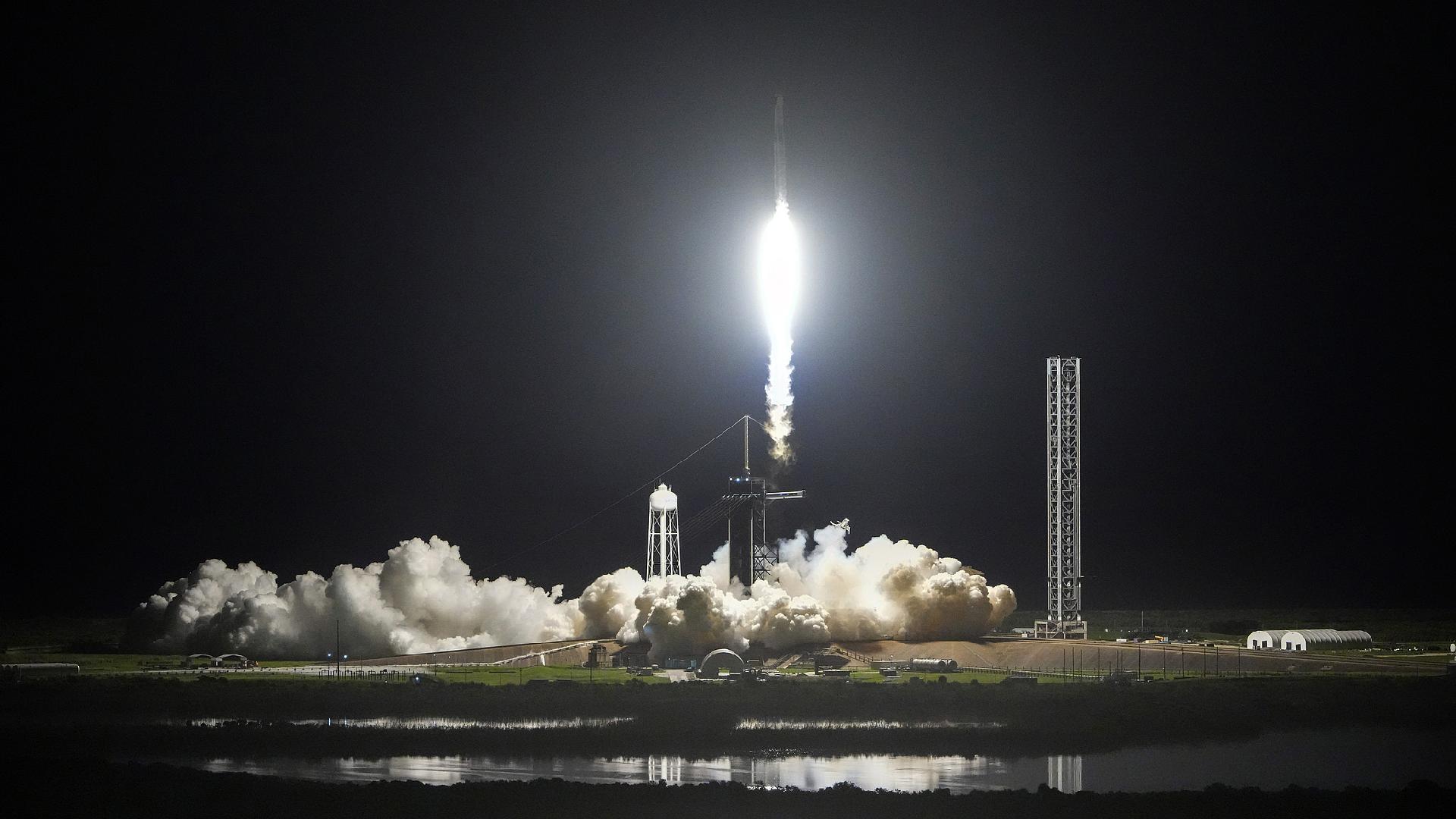SpaceX Conducts Launch with All-Civilian Crew for First Private Spacewalk
SpaceX has successfully launched an all-civilian crew for what marks the first private spacewalk. This historic mission showcases the growing role of private citizens in space exploration and highlights SpaceX's commitment to expanding access to orbital activities. The crew, consisting entirely of non-professional astronauts, is set to undertake tasks outside the spacecraft, paving the way for future private space ventures.

The crew, consisting of a billionaire entrepreneur, a retired military fighter pilot, and two SpaceX engineers, lifted off from NASA's Kennedy Space Center in Florida at approximately 5:23 a.m. Eastern Time.
The capsule achieved orbital altitude around nine and a half minutes after launch. As they experienced zero gravity, the crew playfully batted around a small plush astronaut toy dog. The Crew Dragon separated from its support trunk three minutes later, with onboard cameras capturing stunning views of the capsule soaring above the sunlit Earth.
"As you gaze toward the North Star, remember that your courage lights the map for future explorers," SpaceX Launch Director Frank Messina transmitted to the crew via radio. "We trust your skills, your bravery and your teamwork to carry out the mission ahead."
"We are sending you hugs from the ground."
The Falcon 9 booster used for the mission successfully landed on a seaborne pad.
This is Crew Dragon's fifth, and most ambitious, private mission to date. The spacecraft will eventually enter an elliptical orbit, traveling as close to Earth as 190 kilometers and as far away as 1,400 kilometers, a distance not reached by humans since the conclusion of the U.S. Apollo moon program in 1972.
An earlier launch attempt was postponed last month due to a minor helium leak detected in ground equipment at SpaceX's launchpad. While the leak was repaired, U.S. regulators subsequently grounded the Falcon 9 over a recovery failure during a separate mission, causing further delays. Tuesday's launch was also postponed by about two hours due to adverse weather conditions.
Historically, only highly trained and well-funded government astronauts have performed spacewalks, with approximately 270 conducted on the International Space Station since its inception in 2000 and 16 by Chinese astronauts on the China Space Station.
The Polaris Dawn mission includes a planned spacewalk on the third day at an altitude of 700 kilometers, expected to last around 20 minutes. During this event, the Crew Dragon will slowly depressurize its cabin—lacking an airlock like the ISS—relying on the slimmed-down, SpaceX-developed spacesuits for oxygen.
Jared Isaacman, 41, a pilot and billionaire founder of the electronic payment company Shift4, is financing the Polaris mission, similar to the Inspiration4 flight he funded with SpaceX in 2021. This mission marks the first of three journeys he has bought from SpaceX. Isaacman has not disclosed the costs of these missions, though they are anticipated to be in the hundreds of millions.
Mission pilot Scott Poteet, 50, is a retired U.S. Air Force lieutenant colonel. SpaceX engineers Sarah Gillis, 30, and Anna Menon, 38, are also part of the crew.
For the upcoming spacewalk, Isaacman and Gillis will exit the spacecraft tethered by an oxygen line, while Poteet and Menon will remain in the cabin.
This is the inaugural mission in Isaacman's private Polaris program, which includes a future Crew Dragon mission and another flight aboard SpaceX's Starship, a massive rocket designed for moon and Mars exploration that has cost the company billions to develop.
The four-person crew serves as test subjects for a series of scientific experiments designed to understand how cosmic radiation and the vacuum of space impact the human body, contributing to decades of research about astronauts' experiences aboard the ISS.
Since retiring the Space Shuttle in 2011, NASA has depended heavily on SpaceX and its Crew Dragon, which has completed nine astronaut missions to and from the ISS, being the only U.S. crew-rated spacecraft currently operational.
SpaceX has previously conducted four private missions: Isaacman's Inspiration4 and three astronaut flights organized by Houston-based mission broker Axiom Space.
Boeing, meanwhile, is facing challenges with the development of its own spacecraft, the Starliner, which aims to compete with Crew Dragon. The Starliner’s latest NASA test mission, which began in June and was its first crewed flight, left its astronauts on the ISS last week due to issues with its propulsion system.
Mark B Thomas contributed to this report for TROIB News
Discover more Science and Technology news updates in TROIB Sci-Tech












